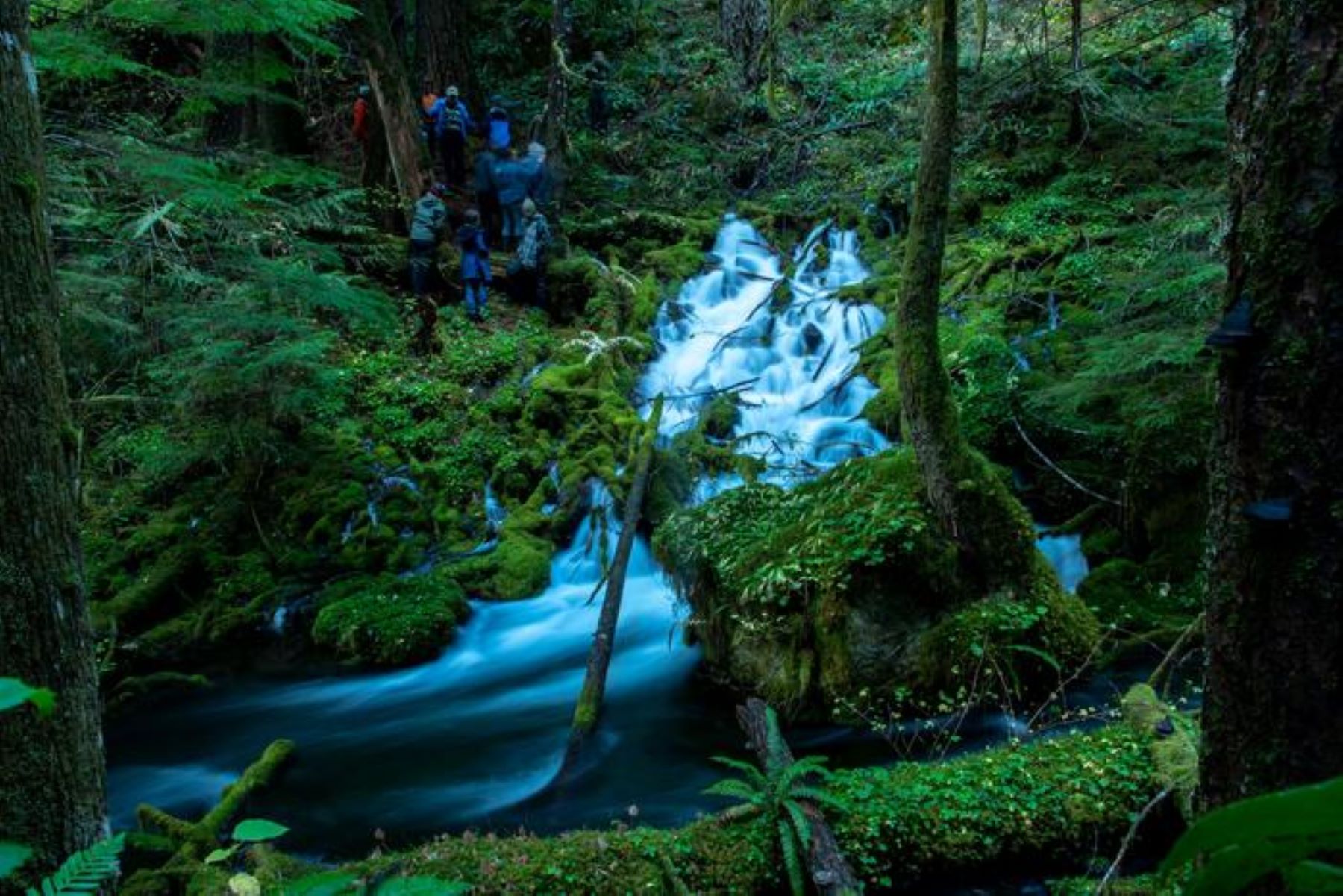- Researchers discovered an aquifer holding at least 19 cubic miles of water.
- The find is nearly three times Lake Mead’s maximum capacity.
January 22, 2025 — University of Oregon scientists and their collaborators announced on January 13 a major groundwater discovery in Oregon’s Cascade Range . They found a hidden reservoir in volcanic rock near the crest of the central Cascades, estimating the aquifer to contain at least 81 cubic kilometers (about 19 cubic miles) of water. That’s almost three times Lake Mead’s maximum capacity and over half Lake Tahoe’s volume.
. They found a hidden reservoir in volcanic rock near the crest of the central Cascades, estimating the aquifer to contain at least 81 cubic kilometers (about 19 cubic miles) of water. That’s almost three times Lake Mead’s maximum capacity and over half Lake Tahoe’s volume.
“It is a continental-size lake stored in the rocks at the top of the mountains, like a big water tower,” said Leif Karlstrom , a UO earth scientist who led the study.
, a UO earth scientist who led the study.
The team, including researchers from Oregon State University, Fort Lewis College, Duke University, the University of Wisconsin, the U.S. Forest Service, and the U.S. Geological Survey, published these findings on January 13, 2025, in the journal Proceedings of the National Academy of Sciences. They report that similar volcanic aquifers likely exist to the north and near Mount Shasta, possibly making the Cascade Range home to the largest aquifer of its kind in the world.
Implications for Water and Volcanic Hazards.
The study is expected to influence how policymakers and scientists view water resources across the Western United States, especially as climate change affects snowpack, drought, and water availability. The aquifer’s large volume could also alter thinking about volcanic hazards; water interacting with magma can lead to more explosive eruptions.
The researchers believe there are similar large volcanic aquifers north of the Columbia Gorge and near Mount Shasta, likely making the Cascade Range the largest aquifer of its kind in the world.
The researchers used temperature data from drill holes that had begun decades ago for geothermal exploration. They noted that water percolating down to about 3,280 feet disrupts the typical temperature gradient, allowing them to map the reservoir’s depth and breadth. According to the study, the current estimate may be conservative, and the aquifer could be even larger than they have measured so far.
Managing the “Geological Gift.”
As the aquifer is fed largely by snowmelt, ongoing climate shifts could decrease the snowpack that recharges it. Scientists say more research is needed to fully understand the aquifer’s longevity and the potential effects of changing precipitation patterns. “If we don’t have any snow, or if we have a run of bad winters where we don’t get any rain, what’s that going to mean? Those are the key questions we’re now having to focus on,”said study co-author Gordon Grant, a geologist with the Forest Service .
.
The National Science Foundation and the U.S. Forest Service supported this work.
Image:
Oregon mountain spring, University of Oregon. Credit, Benjamin Nash . “Scientists examine a large-volume spring in young volcanic rocks of the Mckenzie River watershed on the west side of the Cascade topographic crest that was monitored as part of this study.”
. “Scientists examine a large-volume spring in young volcanic rocks of the Mckenzie River watershed on the west side of the Cascade topographic crest that was monitored as part of this study.”

